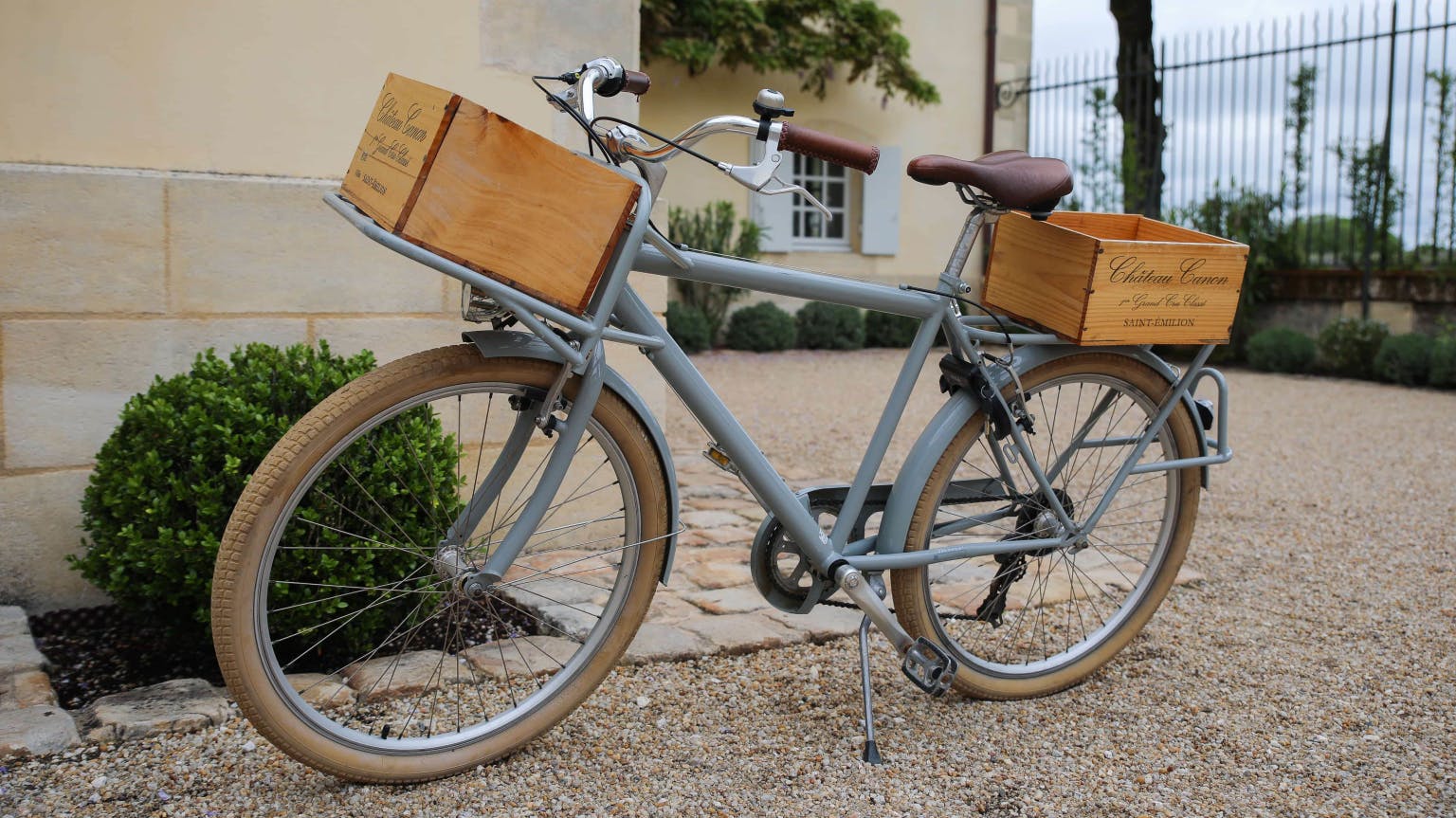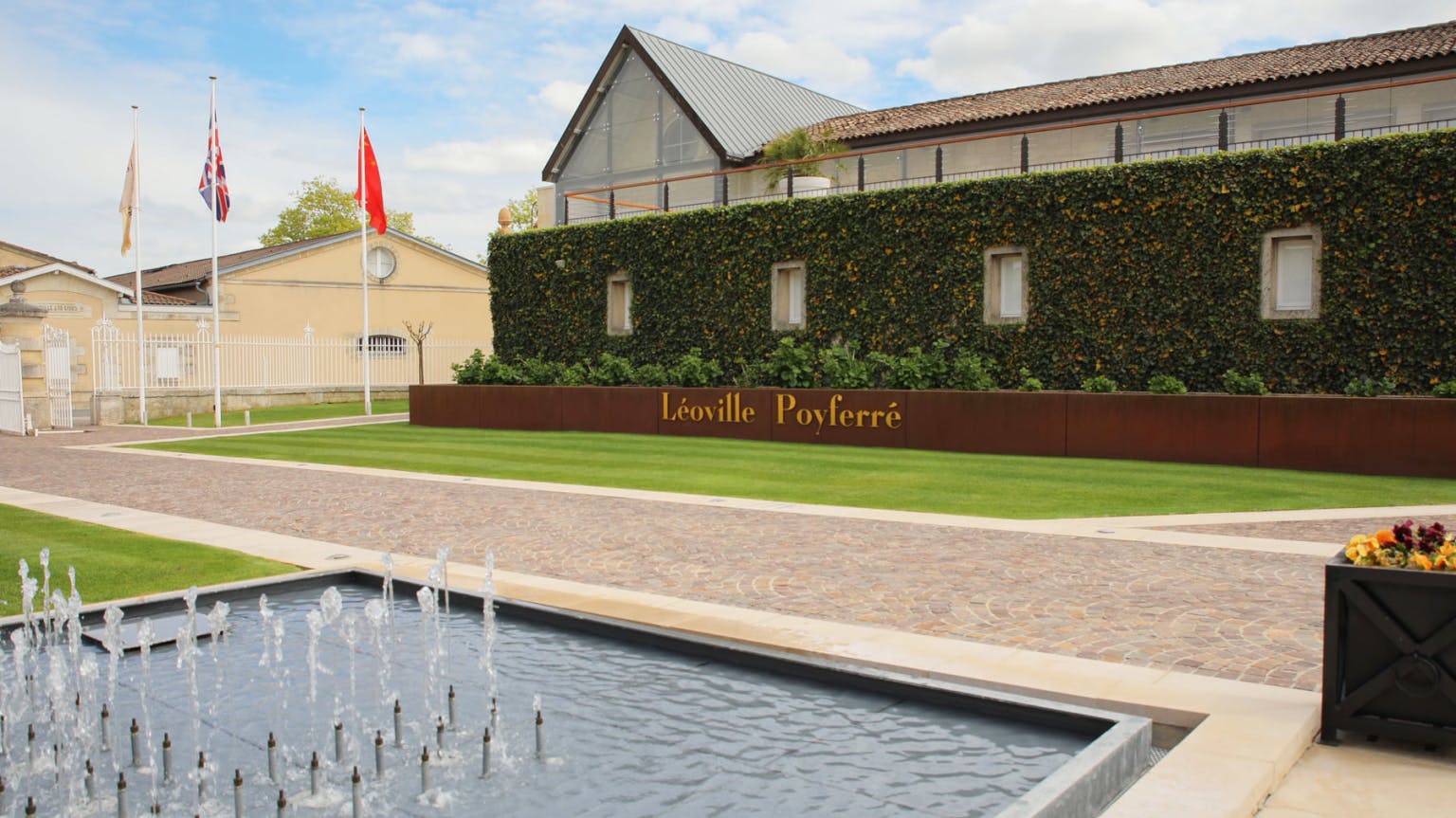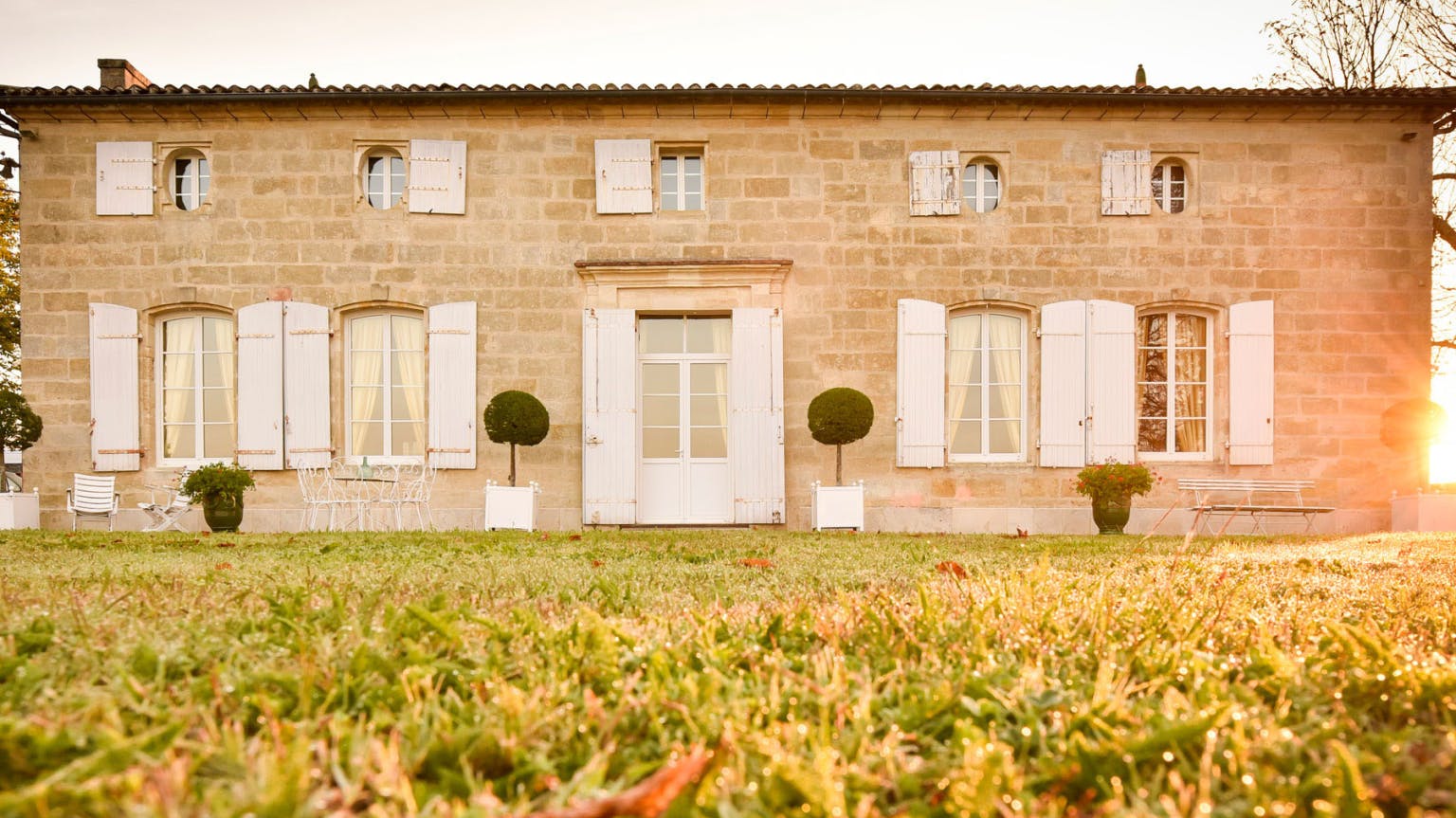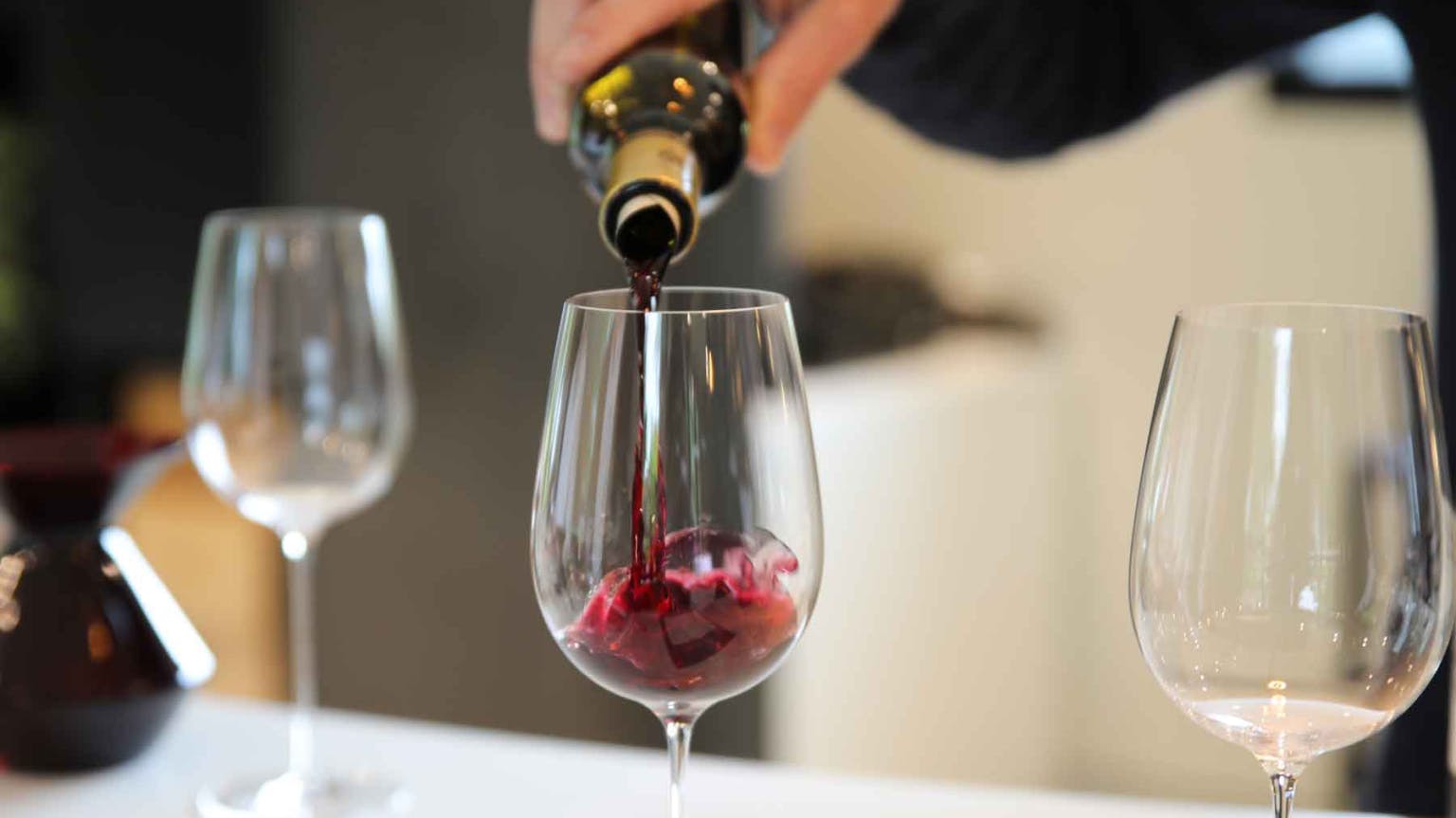JAMES SUCKLING
James Suckling was the first out with his report, published on 19th April, before most people have made it out to taste the new vintage. He’s not shying away from calling this a truly great vintage, saying “it sets a new benchmark for Bordeaux”. It’s the 40th vintage he has tasted en primeur, and he feels it proves the region’s ability to face the challenges of climate change, with its uniquely hot and dry conditions. He notes that while the reds are the undoubted star, it is also a great vintage for Sauternes – with botrytis development in mid-October that produced exceptional wines.
While the growing season urges parallels with 2003, the wines are totally different. The 2022s “can be flamboyant, fruity and tannic, yet they have a freshness and form that give them energy and vitality”, he writes. While he found a few wines that were over the top, he generally felt there was consistent quality across the spectrum, from more modest estates to the grandest châteaux, with the wines “exceptional”. He gives nine potential 100-point scores, versus only one last year (for Lafaurie-Peyraguey in Sauternes – an address he also praises this year).
Suckling’s highlights: Cheval Blanc, Lafaurie-Peyraguey, Lafite-Rothschild, Le Pin, Léoville Las Cases, Pontet-Canet, Trotanoy, Pavillon Blanc du Ch. Margaux, Angélus, Canon
Read James Suckling’s full report
WILLIAM KELLEY – WINE ADVOCATE
Publishing his report on the Friday of Primeurs week, William Kelley defines 2022 as “an amplifier” – highlighting differences between sites and how producers work both in the vineyard and winery. “Bordeaux has produced some monumental wines in 2022, but unlike many of the great vintages of the 20th century, the year was not a rising tide that raised all boats,” he says.
The best wines offer “remarkable concentration, energy and harmony” but there are some that are “jammy, astringent and rustic”. He highlights that those with higher organic matter in their soils and who managed their canopies well were rewarded. He argues that vines adapted to the long, dry season, and the experience of recent warm vintages ensured that 2022 was not another 2003 – despite its extreme, hot, dry conditions.
He warns that the frequently high pHs are a risk for the final hurdle – with an increased chance of volatile acidity and Brettanomyces, suggesting that although few samples showed these faults during the en primeur tastings, “it is certain that some producers will trip before the finish line this year”. Nevertheless, he is clearly impressed by the best wines – with eight potential 100-point scores in the mix.
In a first, the work was divided between Kelley and Yohan Castaing, a relatively new member to the Wine Advocate team – so there are notes from both. The highlights noted below are 12 specifically recommended.
Kelley’s highlights: Berliquet, Bourgneuf, Branaire-Ducru, Clos Manou, Dame de Montrose, De Retout, Domaine de l’A, Grand Village, Haut Marbuzet, Langoa Barton, Larrivet Haut-Brion, Mangot
Read Kelley’s full report, notes and scores on the Wine Advocate

GEORGIE HINDLE – DECANTER
Despite the year’s extreme conditions, Decanter’s Bordeaux correspondent Georgie Hindle writes that “a surprisingly large number of vineyards and their growers prevailed against the odds to create a wealth of exceptional wines in 2022”. She feels there are “both serious highs and lows”, but “some estates produced their best-ever bottles” – with “supple textures, excellent definition, long finishes and a sheer brightness and energy that has produced some of the most compelling wines I’ve ever tasted at this early stage”. She also emphasises how, despite being similarly hot, the year is not another 2003. For Hindle, the Margaux appellation was a highlight, as were the wines from the Haut-Médoc, as well as the top end of Saint-Emilion. She has pulled out a list of “coup de coeur" wines – those that were heart-stoppingly good, and it is those that feature as her highlights below.
Hindle’s highlights: Beauséjour Duffau Lagarrosse, Canon, Cheval Blanc, Clos Fourtet, Figeac, Larcis-Ducasse, Laroque, Troplong Mondot, Les Carmes Haut-Brion, Smith Haut Lafitte, Brane-Cantenac, Giscours, Branaire-Ducru, Gruaud-Larose, Léoville-Las Cases, Pichon Comtesse, Montrose, Phélan Ségur, La Conseillante, La Fleur-Pétrus, Vieux Château Certan, Clos du Clocher, Pétrus
Read Hindle’s full report, notes and scores on Decanter
ANTONIO GALLONI – VINOUS
The first of the two Vinous reports comes from Antonio Galloni, who declares the best wines of the vintage to be “magnificent, viscerally thrilling wines” – “some of the most memorable young wines [he has] ever tasted” – although does temper this enthusiasm by saying that some selection is warranted. Running through the growing season, he highlights how “patience and technology” were critical – with larger numbers of smaller vats, allowing producers to harvest only what was perfectly ripe.
The greatest surprise, of course, is the wines – not rich and opulent as for 2009 or 2018, but wines that “combine flavour intensity, energy and finesse in a way that I can only describe as magical”. He repeats the refrain that the wines bode well for Bordeaux’s fate in the face of climate change, and is clearly enchanted by the best wines. He flags that some of the wines are “a bit fragile” and that “élevage will make or break them”, not feeling it’s totally consistent below the top tier. He does, however, pull out a handful of over-performers, which we’ve listed as his highlights below. For him, the advancements in viticulture and winemaking are what define 2022 – wines of “notable depth and freshness without excess weight”, but exactly why they turned out the way they did remains something of a mystery.
Galloni’s highlights: Alter Ego de Palmer, Beau-Séjour Bécot, Brane-Cantenac, Clos Puy Arnaud, Clos Saint-Julien, Figeac, Les Forts de Latour, Giscours, La Conseillante, La Gaffelière, Lafon-Rochet, Larcis-Ducasse, Léoville Las Cases, Le Pin Beausoleil, Les Carmes Haut-Brion, Malartic Lagravière, Moulin Saint-Georges, Puyblanquet, Quinault l’Enclos
Read Galloni’s full report, notes and scores on Vinous

JEB DUNNUCK
Jen Dunnuck is clear that the best 2022s are set to be “legendary”, with “brilliant wines from throughout the region”, but highlights that “there are dramatically different styles in the vintage” – emphasising that this is different to quality, which is “incredibly high”. The vintage is united by its “theme of ripeness and power”, yet yields, winemaking and terroir have all resulted in the aforementioned diversity.
He finds the wines of the northern Médoc to be “powerful, concentrated, majestic wines showing remarkable purity and vibrance” and is fast to defend both the pH and alcohol levels, with the former sitting at or below the level of the 2020s and the alcohols “well within the normal ranges of 2009, 2010, 2015, 2018, 2019 and 2020, and very few 2022s show excessive alcohol”. He points to wines from the Right Bank’s limestone and deeper clay soils as “highlights of the vintage” – having retained “an incredible sense of freshness and purity while showing the inherent ripeness and power of the vintage”, although he finds Pomerol “slightly more erratic”. In his view, the satellite appellations have produced a “number of terrific wines” – with Castillon producing many “that rival the best from Saint-Emilion”.
He compares the year to a blend of 2020 and 2018, or a mix of 2005 and 2010, with a little 2009 here and there. They are, he feels, “ripe, concentrated, sumptuous wines that have a real ‘wow’ factor”.
Dunnuck’s highlights: Montrose, Mouton Rothschild, Haut-Bailly, La Conseillante, Larcis-Ducasse, Les Carmes Haut-Brion, Cos d’Estournel, Léoville Las Cases, Vieux Château Certan, Pétrus, Pichon Comtesse, Léoville Poyferré
Read Dunnuck’s full report, notes and scores
JANE ANSON – INSIDE BORDEAUX
Anson offered early coverage of the growing conditions and yields – ahead of tasting the wines – but her final reports don’t delve much into the detail of the year on its own, instead focusing on tasting notes and the methodology of her scoring. She is one of few critics to mainly offer firm scores rather than bands (apart from when there’s a chance of 100 points, which she doesn’t like to offer to unfinished wines), something she argues is most useful for those deciding on whether or not to buy. As her scores highlight (with five potential 100-pointers on the Right Bank, and two on the Left, but none for dry or sweet whites), she feels it’s a stronger year for reds than whites.
She highlights the high levels of tannin and colour, as well as alcohols – noting that because of the latter she has erred on the side of caution with her drinking windows. She found the second wines stronger in the northern Médoc generally, and notes how producers used very different approaches to the vintage. On the Right Bank, she emphasises the advantage of being on Saint-Emilion’s limestone plateau, and that Pomerol offers “muscular swaggering style” this year. She pulls out a selection of wines as value buys, which we’ve listed as her highlights below.
Anson’s highlights: Laroque, Saintayme, Peymouton, Bel-Air, Haut-Simard, Feytit-Clinet, Le Rey les Rocheuses, Laurence, Petit Bocq, Roquetaillade la Grange, Cantelys, Ferrande, Angludet, Mejean, De Pez, Fonbadet, Haut-Bages Libéral, Domaine les Sadons, Finegrave, La Fleur Lauga, Larrivaux, Bel Air Gloria, Cap Leon Veyrin, G d’Estournel, G de Guiraud, Charmes-Godard, Clos Floridène, L’Exuberance Blanc
Read Anson’s full report, notes and scores

LISA PERROTTI-BROWN MW – THE WINE INDEPENDENT
With some major releases arriving earlier than anticipated, Lisa Perrotti-Brown MW initially published a “teaser” article on the year, with notes and scores for wines that had been released or were set to be in the coming days, including more detail on Cheval Blanc, Angélus, the Barton stable and Beychevelle.
In her notes on early releases, Perrotti-Brown writes that 2022 was “a faith-affirming vintage for Bordeaux growers” – proving that the region could handle climate change. She highlights the surprising consistency from the year, as well as “a luminosity… that defies what we thought we knew about Bordeaux varieties”. With “its myriad of earthy, nuanced, soft-spoken, shimmery expressions”, it’s “a vintage that Bordeaux fans and serious collectors will want to seek out”.
In her full report, released a week later, Perrotti-Brown declares 2022 “a classic, great Bordeaux vintage”. Echoing our findings, she notes that there are no rules in this vintage – picking dates varied significantly, and yet drastically different approaches resulted in excellent wines. She believes that a minority of wines (less than 10% of what she tasted) were acidified which is not in itself problematic, but where it has been done poorly, it shows. She also argues that the record-high percentages of press wine leads to a ruggedness to the tannin structure of some wines.
Despite these two quibbles, she was “surprised by how consistent [she] found the wines from top to bottom”, in terms of quality – but she feels, like Galloni, that the heterogeneity of the vintage comes through in the style of the wines. Overall, however, she finds the wines fuller-bodied, high in tannin and quite high in alcohol, but with no dried-fruit character, instead showing impressive bright, red fruit and florals – even if the acidity is relatively low.
Stand-out appellations are tricky, but she points to Saint-Emilion’s limestone plateau and areas off it, as well as parts of Castillon, Fronsac and Entre-Deux-Mers with similar bedrock. She writes: “There are many beautiful wines from the Right Bank and Pessac-Leognan, but the top wines of the Médoc are astonishingly great in 2022. If you love Cabernet Sauvignon, you may want to pay special attention to this vintage because the results, in some cases, are mind-blowing.”
Perrotti-Brown highlights that the vintage allowed “properties on the peripheries of ‘great terroir’” to thrive this year – and she pulls out a list of estates falling in this category that are likely to offer good value in 2022, which we’ve featured as her highlights below.
Perrotti-Brown’s highlights: Branas Grand Poujeaux, Cantemerle, Cantenac Brown, Capbern, Clos Cantenac, Clos de Sarpe, Clos du Clocher, Clos Lunelles, Cos Labory, Couhins-Lurton, D’Arce, De Carles, Haut Carles, De Pez, Fonroque, Fontenil, Fourcas Hosten, Grand-Puy-Lacoste, Gros Caillou, Le Promenoir, Haut-Bages Monpelou, Haut-Simard, Jean Faure, Kirwan, La Mouline, La Mouline Totem, La Rose Perrière, La Vieille Cure, Lafon-Rochet, Lassegue, Latour-Martillac, Les Trois Croix, L’If, Malescasse, Marjosse, Maucaillou, Mauvesin Barton, Montlandrie, Meyney, Pavillon Rouge, Phélan-Ségur, Poesia, Potensac, Siran, Tour Bayard, Tour Bayard l’Angelot, Tour Saint-Christophe, Vermont, Cuvée Prestige
Read Perrotti-Brown’s full report, notes and scores on The Wine Independent
NEAL MARTIN – VINOUS
After the requisite satirical introduction, Martin launches into his report emphasising his frustration at estates’ insistence that he tastes at the château itself, rather than at larger tastings – something he feels is under the belief that it will lead to higher scores.
He argues that the anticipated vintage is subject to some fairly typical hyperbole. Although he emphasises that the vines seemed “in verdant rude health” prior to harvest, he’s not convinced that the heat and drought had no impact – as some producers, he suggest, argue. He references the increased use of press wine on the Left Bank, something he attributes to the influence of superstar consultant Eric Boissenot.
As to the wines themselves, he seems reluctant to offer glowing praise, but writes that, “The crème de la crème is blessed with kaleidoscopic aromatics, intense fruit, finely-sculpted tannins, structure, elegance and length. Above all, contrary to what the growing season implied, they are suffused with freshness.” These are wines that “dazzle”. He feels however that – and contrary to others – that “terroir is not the be-all and end-all” but instead “a guiding hand” which results in “a partial flattening of the hierarchical pyramid”.
Although he sings the praises of the best wines in 2022, he caveats this by saying some wines are “sweet ‘n’ sour”. This he attributes to “human error” and picking dates in particular, with the phenolic and sugar ripeness not always matching up. He feels that it was a season that demanded producers’ “A game”.
He found Left and Right Bank are fairly equal in the year, but Saint-Julien was a particular standout. He finds the wines “unabashedly floral”, perfumed and black- rather than red-fruited. He highlights the powdered texture of the tannins in the vintage, as well as the unexpected freshness in the best wines. Most importantly, he emphasises that these are wines for long-term ageing. It’s a far from simple vintage, but, as he concludes, “If you could keep a leash on all that potential energy, greatness was in the offing.”
Martin’s highlights: Brane-Cantenac, De Fargues, Haut-Bages Libéral, L’Eglise-Clinet, La Conseillante, Léoville Barton, Phélan-Ségur, Pichon Baron, Ségla, Sénéjac, Vieux Château Certan
Read Martin's full report, notes and scores on Vinous
Find out more about the vintage and browse all the latest Bordeaux 2022 releases

